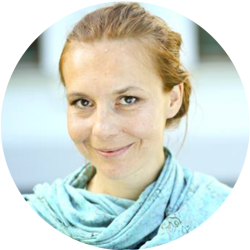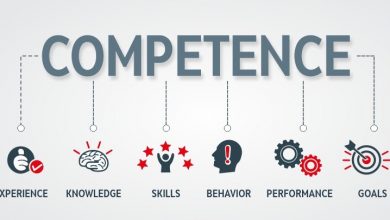Personal Development Plan
The article discusses personal development; why it is so important for us and how to go about it in a systematic and organized way. It presents how to create a personal development plan.

Why did I choose this tool?
Who is completely satisfied with all parts of their personality? I know I’m not, at least not now, while I’m writing this. In the postmodern era, when people are highly conscious about themselves and the need to grow and develop, many people fail in doing it simply because they didn’t have the right knowledge and the tools to do it. With learning, we can find out what needs to be changed about ourselves and how to do it. We are developing competence to identify learning objectives and pursue them proactively.
How does it apply to being a trainer?
Trainers learn how to use an organized and tested theory-and-practice-based step-by-step approach to work on their goals related to personal growth and development.
Content
When it comes to learning, there are certain aspects of our personality and personal qualities that are deeply rooted in our individual genetic predispositions. These predispositions can develop and form with life’s influences and as a result of demanding processes that involve considerable personal efforts and a high degree of motivation. Put it simply, we only change our personality or major parts of it when we feel there are good grounds for doing so (Illeris, 2007, p.133).
As Scott Jeffrey, personal development trainer and prolific writer on personal development says, “If you examine most people over the course of a decade, you’ll observe a slight change in their development and behavior. Personal development implies a permanent change in the structure of your being including your body, brain, or consciousness. Just because you adopt a new habit doesn’t mean you have or will grow from it. If this new habit, however, changes you over time, it will facilitate your development. Our behavior and the display of skills and aptitudes are where we can observe signs of permanent change. (scottjeffrey.com)”
Whether we enjoy it or not, personal development is highly required for a postmodern individual to adapt to the trends on the job market and to the fast-changing pace of our lives. Moreover, personal development is a necessity if we want to realize more of our inborn potential.
“Personal development plan (PDP) usually includes a vision of one’s aspirations, strengths or competencies, education and training, and stages or steps to indicate how the plan is to be realized. Personal development plans may also include a statement of one’s career and lifestyle priorities, career positioning, analysis of opportunities and risks, and alternative plans (Plan B)” (Chinoperekweyi, 2017).
Exercise:
The following steps for creating a personal development plan are adapted from scottjeffrey.com and planetofsuccess.com. The tool is intended for the trainer’s individual work.
Step 1. Overview of your current situation
Here you need to be honest with yourself and your life situation. The analysis of your current situation helps you to identify the areas that you can work on in the future.
Tony Robbinson’s Wheel of Life is a useful tool. Some suggested categories are given, but you can assign the categories that mean most to you instead.
Next, give the categories a mark on a scale 1-10 depending on how pleased you are with your current situation and progress in this area.

Wheel of Life taken from tonyrobbins.com
What am I pleased with and what is currently missing in my life?____________________________________________________________________________________________________________________________________________________________________________________________________________________________________________________________________________________________________________________________________________________________________
Step 2: Dream and Create Your Vision
A personal development plan contains a statement about any segment of a future reality you intend to realize.
Reflection questions:
- What do I really want to do with my life?
- What kind of a person do I really want to be?
- Do I have a vision that I want to implement in this world?
- What are my goals and ambitions?
- What are my dreams?
- Do my current decisions guide me exactly where I want to be?
Formulate your vision of the future:
____________________________________________________________________________________________________________________________________________________________________________________________________________________________________________________________________________________________________________________________________________________________________
Step 3: Select Your Areas of Focus
Creating an aggressive Personal Development Plan with many goals normally fails. Over-planning usually brings pressure and discouragement. Eventually, you will abandon your plan. Be aware of the tendency to overthink the selection process. In other words, your personal development plan should be simple and functional – a one-page plan has proved to be the most optimal.
In general, try to keep your goals SMART (Doran, 1981):
Specific – target a specific area in your life that you want to improve
Measurable – specify how you want to measure progress
Assignable – decide who will have to do it
Realistic – set goals that can realistically be achieved
Time-related – specify when you want to accomplish the goal
Reflection questions:
Brainstorm and write 3 areas you would like to work on in your personal development plan
Step 4: Establish Personal Development Goals
Another common mistake people make with their Personal Development Plan is to set big goals.
Big goals are suboptimal for your self-development plan. A big goal might be to master a particular instrument within 12 months. Such a goal is likely to go unrealized.
To win the battle for your development in the war of distractions, set mini goals. Mini goals help you build momentum because they’re more readily achievable than big goals. Have a big vision but only set mini personal development goals that are fun and engaging. Instead of mastering an instrument, for example, perhaps you can establish a mini goal like to learn how to read music sheets or to play The Beatles’s Let it Be without effort. These types of personal development goals will inspire your practice. In general, try to align your big goals with your small goals.
Pick one big goal for each area you chose and several small ones.
| Area | 1. | 2. | 3. |
| Big goal | |||
| Small goal(s) |
Step 5: Discover Your Practices
Once you selected the areas of your Personal Development Plan, the next step is to determine your practices. These practices are the actions you are committing to do consistently for the development of your particular areas of interest.
For example, if you want to improve your writing, write at least 1,000 words every day. Want to learn to play the guitar? Pick up your guitar for at least 15 minutes every evening. Want to increase your strength? Determine your training routine and follow it, three days per week.
Consider how much time you have available to invest in your development. Let’s say you have only 30 minutes per day. Developing new skills, for example, may take a minimum of 15 minutes of daily practice. To set yourself up for success, one suggestion is to pick up three areas to focus on for a period of 90 days.
Reflection questions:
What practices do I intend to establish to achieve my goals?___________________________________________________________________________________________________________________________________________________________________________________________________________________________________________________________________________
_________________________________________________________________________________________
6. Set Your Schedule
Once you know your practices, ensure you have enough time for making progress.
Many people struggle with scheduling for two primary reasons:
- It’s easy to underestimate how long it takes. We get too ambitious with our scheduling and aren’t grounded in reality.
- We tend to prioritize time scheduled for others over the time we dedicate to ourselves.
So first ask, How much time can I reasonably commit to my personal development plan?
The question isn’t what you should do; it’s what you think is reasonable and practical in the course of your busy life. The average business leader invests 30 minutes a day in personal development—right before bed.
The two easiest periods to carve out time for your Personal Development Plan are early mornings and late evenings. They both share the same two qualities:
- There are fewer distractions and
- You don’t have to interrupt your work/life flow to jump into your practices.
The key is to find times where you can be consistent and then establish a daily rhythm with your practice. In this way you don’t have to make a daily decision of whether to practice or not—you just practice!
Reflection questions:
How much time in a day/week/month/year do I plan to allocate to fulfill my targeted personal goals?
What time of the day/week/month do I plan to dedicate to my goal?
Where and how do I plan to set the time for my personal development?
___________________________________________________________________________________________________________________________________________________________________________________________________________________________________________________________________________
_________________________________________________________________________________________
Step 7: Monitor Your Progress
There are 2 ways to go about recording one’s progress: feedback from others and personal records. It is important to observe and record any results before the beginner’s enthusiasm wanes away; that way you can use the observed results for further motivation. Also, continuous monitoring of your plan allows you to change and adapt it depending on your progress. For example, doing 20 abs a day came out to be easier than you thought; all the more reason to raise it to 50 abs a day.
Reflection questions:
How and how often do you plan to monitor your progress?
Do you plan to ask anyone for feedback?
___________________________________________________________________________________________________________________________________________________________________________________________________________________________________________________________________________
_________________________________________________________________________________________
Copy your answers for each step in a diary or on a separate sheet of paper to keep them close and accessible.





